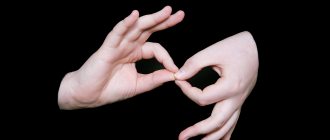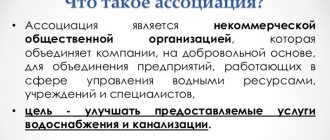All people lie - no one argues with that. But you can hardly start an argument because all people want to know when they are being lied to. They want it, and how! But, alas, no one carries pocket polygraphs with them yet, and their accuracy is far from ideal. On the other hand, why do we need a polygraph if we ourselves can catch our interlocutor in a lie? For this you don’t need much - remember that a person always feels not quite comfortable when he lies, but what does this mean? That he behaves differently. And you can learn a lot by watching him. We are ready to help you with this.
Truth has simple speech. Grigory Skovoroda
Who usually tells lies?
When telling a lie to his interlocutor, deceiving him, a liar practically does not think about what visual signals he is giving.
There is a fairly common expression: to be caught in a lie. What does it mean? This means to expose, to reveal evidence of someone's guilt, to catch someone in a lie.
Modern psychology identifies four main types of people who tend to tell lies.
- If a person wants to be smarter than others. Typically, this type of person takes an active part in debates and discussions, proving to their opponents their extensive life experience and more than one higher education. In order to catch such a person lying, you just need to ask a few clarifying questions on the topic under discussion. A liar will answer generally, in general phrases. Here's your first hint.
- The second type characterizes selfish people. Usually such liars give a lot of compliments. So he tries to “lull” the vigilance of his interlocutor, achieving selfish gain for himself. Usually such people become scammers who deceive the gullible and naive. Sergei Mavrodi is a vivid example of this.
- The third type of liar is the most interesting. This type includes people who have the ability to lie from birth. For them it's art. They usually have excellent acting skills, so they quickly fool anyone.
- The fourth type of people are pathological liars. They are comfortable living in their own lies. They invent a fantastic life for themselves (confidant of the President, test pilot, dad - Chief Judge of the city, etc.) Such people believe so much in fairy tales of their own creation that they get out of any uncomfortable situation.
Often such liars have low social status.
What seems like a lie is not always a lie
The presence of signs of lying in the interlocutor does not mean that he can be caught in deception.
- There is no accurate technology for detecting deception. Even a polygraph test does not give one hundred percent results.
- Some signs associated with physiology (redness, sweating, dry throat) can only indicate individual characteristics of a person and are often misinterpreted.
- The above methods of determining lies are only of an auxiliary nature and cannot be the basis for accusations of deception. Operate only with facts!
Truth is on the left
How to catch a person in a lie? Look at his left side. Usually a person is outwardly quite tense, although he tries to hide it. From a neurophysiological point of view, a person has less control over the left half than the right.
For example, if a right-handed person is a liar, then during a conversation he will gesticulate intensely with his left hand. If the right hand is practically not involved in the matter, then be completely sure that the person is lying.
Another discrepancy: the left side of the face is more active. The person is definitely not sincere with you.
Lies are on the tip of the nose
Our own nose gives us away, as they say. If, when communicating with you, a person twitches the tip of his nose or moves it to the side, then think about the sincerity of his words.
If a person flares his nostrils, it means they don’t really believe you.
The nose is quite sensitive to lies. You will want to scratch it precisely when you are lying. In science, this fact is known as the Pinocchio Effect.
Moreover, the lie is scientifically substantiated. Telling lies increases blood pressure. This affects the nasal mucosa. The hormone catecholamine is produced. After that, the stimulated blood pressure of the nerve endings is included in the process of “giving out the truth.” Itching appears. Therefore, if the interlocutor rubs his nose, eye, or simply touches them, he is being dishonest with you. Moreover, this fact has been scientifically confirmed.
Who knows how to recognize a lie?
Western psychologists have been studying the phenomenon of lying for several decades. The most famous experts dealing with the issue of lies are the spouses Alan and Barbara Pease and Paul Ekman. The books of these authors have become the best helpers for those who want to learn to recognize when they are being told the truth and when they are being deceived.
The art of recognizing the truth has moved to a professional level. Specialists who know how to distinguish lies from verbal and nonverbal signals are in great demand.
A verifier is a person whose main task is to confirm that the information being reported is true. To do this, the specialist uses an instrumental method (polygraph test), profiling (methods for predicting and assessing human behavior based on appearance, behavioral characteristics, facial expressions, gestures.
Profiling specialists pay exclusive attention to profiling. They are often included in the staff of large companies and are involved in personnel selection.
But you don’t have to be a professional to understand when your interlocutor is telling the truth and when he’s lying. It is enough to know the basic behavioral signs and be careful.
Hands... where? Gestures
When your interlocutor is communicating with you, he tries to hide, put his hands in his pocket, or simply close his palms, then with some confidence we can say that he is hiding something from you. This factor is especially pronounced in children.
Hiding your palms or vice versa - opening them - these features can be used against you even in a typical market. An experienced seller will immediately pay attention to your palms if you refuse to buy something from him.
If you cover your mouth with your hand, then this is an external manifestation of the desire not to spill the beans, not to say too much.
If the interlocutor tenses the muscles of his mouth and bites his lips, it means that he has already been caught in a lie.
Gestures cannot be trusted only if they are systemic, that is, a person constantly uses them.
Phrases - “talkers”: verbal signs of a liar
“Honestly”... Do you hear it often? This is the number one phrase that will help catch you in a lie. After pronouncing it, it is better to listen to what information will follow next.
Liars usually say clichés:
- You have to believe me.
- I'm telling the truth, you know me.
- Can I cheat? Never!
- I'm being honest with you.
The essence of deception is hidden not even in what he says, but in how. The timbre and rhythm of the voice changes - this is a reflection of insincerity. If your interlocutor experiences long pauses, hesitations, and difficulty pronouncing the next sentence, be wary. His tone may change due to the fact that he cannot fully control himself. If the interlocutor speaks to you calmly and in a low voice, he is most likely telling the truth.
Gestures add information to you that in front of you is a liar. If there is a mismatch between gestures and words, think about the person’s true intentions.
If a person lies to you, his emotions may rage. Outwardly, it will resemble a sapper walking through a minefield.
Pauses in speech. A liar's attention is usually unfocused. He literally selects the words to “lie.” In this case, long pauses of 5-10 seconds are formed. Pay close attention to how the person speaks to you.
Repeats your question. To gain some time, the liar will immediately repeat the question after you. Yes, it's a few seconds. But a liar usually has enough time to come up with an answer to it.
And lastly: in a conversation, a liar will always talk about his innocence. Does an innocent person have anything to justify himself for?
Listen carefully
Analyzing responses (statements) can help you recognize when someone is telling a lie. For example, if you ask polar questions (which can be answered with “yes” or “no”), then the answer should contain the words “yes” or “no”. Watch out for negations that don't contain the word "no."
Let's say you ask, "Have you ever stolen something from your employer?" If the answer is, “I would never do that,” that could be a red flag, Driver says. It is normal for a person to say, “No, never” (because the answer contains the word “no”). If you analyze the phrase “I would never do that,” you will understand that we are talking about action in the future, which is not an answer to your question about events in the past.
Postures when talking
Even your posture during a conversation can reveal a lie. For example, a person is in a tense, uncomfortable position that is not typical for him. He crawls around in the chair, tries to sit more comfortably - these are signs that the topic of conversation is unpleasant for him or he does not agree with your point of view.
Liars may lean on an object or cross their legs. If a person is sincere with you, then his posture is quite comfortable and relaxed.
How to dispel your doubts
If you doubt the sincerity of your interlocutor, you can conduct a small test - abruptly change the topic of conversation.
You will immediately see the relief on the face of the deceiver, because he no longer has to try and invent believable events. Read more about your interlocutor's lies.
Also, if you still have doubts about the veracity of the story, then try to return to an old conversation after some time - the person who lied will certainly forget about some details and as a result the story will be completely different.
What a man is, such is his speech. Socrates
Please also note that the person deceiving you may repeat several times that he is telling the truth and you must believe him. Although if he is truly sincere, then why emphasize the truth of his words? In addition, a person who does not want to give you truthful information may begin to get angry and be rude to you. Your counterpart may also unexpectedly show up sick - all in order to get away from an unpleasant conversation.
Facial expression
Experienced liars are not easily caught in lies. Sometimes they "reprogram" their body language. For example, they openly express boredom, yawn, use an open posture in conversation, and speak slowly.
Liars usually have a fake smile. In this way, the liar will try to outwardly reduce mistrust on your part. How to distinguish a sincere smile from a fake one? If a person smiles at you sincerely, then small folds form at the corners of his eyes - “crow’s feet”. With a fake smile, the liar uses only his mouth.
A liar will blink frequently. This is a manifestation of his excitement. Of course, if he doesn't have problems with his eyes.
Fake surprise. When a sincere person is surprised, his eyebrows rise. If a person only creates the appearance of joy in meeting you, then his intonation in his voice will only change.
How to expose a liar? Rules-const: I can’t be fooled
Caught in a lie as an interlocutor? Use effective methods:
- Take simple steps in the conversation. Get into the same rhythm with him. Be on his wavelength. It will be more difficult for him to lie to you. At the same time, it’s not worth it to directly accuse your interlocutor of lying. Better pretend you didn't hear this information. Let him repeat it for you. Usually, earlier and later information does not correspond to each other.
- Ask direct and leading questions. Use your expressive facial expressions and gestures. They are the ones who will force liars to react quickly. At the same time, questions need to be asked in such a way that the liar gets the feeling that he has been caught in a lie, and you have already had all the information for a long time.
- When talking to a liar, ask him for advice for a friend who is in an awkward situation: he is being lied to his face. If you have a sincere person in front of you, he will help you with advice on recognizing lies by changing gestures and facial expressions. He will tell you what he knows. If the interlocutor has motives to deceive you, he will begin to laugh it off and get nervous.
- Look at the liar's emotional expression. His speech may begin incoherently and end abruptly.
- Little time passes between what is said and the emotion. Usually, in a sincere person, the emotional coloring passes simultaneously with the spoken words.
- If the liar's facial expression does not match what is being said, you can be sure that he is lying.
- A slight grin or only the facial muscles are involved in the expression of emotions, then he is definitely hiding something from you.
- By telling a lie, a person physically manifests it. She shrinks in a chair, tries to take up as little space as possible on the chair, presses her hands towards herself and takes an uncomfortable sitting position.
- A liar will always avoid meeting your eyes (although this does not apply to pathological liars).
- A liar will constantly turn his body away from you, while tilting his head. Know that this is a sign of an unpleasant flow of conversation between you.
- In a conversation with you, a liar will put up a kind of “defense.” For example, a napkin, a vase, a chair. So, he sets up his “defense”.
- Ask for a story or information to be told in reverse chronological order. Coming up with a story is half the trouble, but turning it upside down is difficult, it will turn out to be a mess. Try it yourself!
- In the questions we will find out as many details as possible. Liars usually don't pay attention to details. Therefore, find out as much as possible: what the color was, the object, the person, what they were talking about - whatever.
- Be silent and show outward distrust. Put the liar under extreme stress. Literally tell him you don't believe him. At the same time, look closely into his eyes. Of course, the situation is unplanned for a liar. And it is at this moment that important details will be revealed.
To master the skill of detecting lies, you need to learn to compare all factors into one picture. The result is a cluster of signs that indicate a lie.
How can you tell from a person's appearance that he is lying?
Identifying a lie is easy and simple by observing facial expressions, listening to the voice and spoken words, and also paying special attention to the gestures and postures used by the person lying to you. Here are some examples.
One person is trying to appear before you as extremely honest, an opponent of all lies. Therefore, he constantly repeats: “honestly,” “trust me,” “I swear to you,” “this is one hundred percent true.” He doesn't believe himself and tries to convince himself.
Another, in order not to lie, will try in every possible way to evade the topic under discussion and the direct questions asked. To this end, he will convince you that he is not aware of what is being discussed. Or he just doesn't want to talk about it.
Sometimes a liar becomes outright rude and may begin to be rude and rude so as not to talk about what he has to lie about. In such cases, things can escalate to shouting, scandal and even assault.
Remember that an honest person, on the contrary, will try to tell you everything in detail, defend his position, and explain in detail the circumstances of the case. In some cases, he may simply be deliberately mistaken, but not lie.
Often you have to deceive in the name of your own salvation or to protect a loved one. This is the so-called “white lie.” This has probably happened to each of us at home in the family and at work with colleagues.
To recognize a lie, professional psychologists recommend carefully observing the eye movements of your interlocutor, his facial expressions, gestures and body movements. Despite the fact that for each person all this is purely individual.
Some try to cover their bodies, others start scratching their noses, others look around. As you know, his eyes can say a lot about a person. A liar will try not to look you straight in the eyes, he will look away and dart his eyes.
If you ask him some specific question, he will start to get confused out of surprise, stammer, stammer, blush, because... a false legend, as a rule, is not thought through to the end and has to be invented on the fly.
A person who lies feels emotionally uncomfortable, his behavior is unnatural, he may be too active or too passive. If you know your interlocutor well, you can easily determine that he is lying.
How to catch a man in a lie?
Lies are the beginning of problems in every couple’s relationship. The main thing is that trust in the partner is lost. Moreover, it does not matter at all who first launched the mechanism of lies.
How to catch your husband in a lie? A common question asked by women. Usually the spouse senses deception intuitively, on a subconscious level. Typical signs of a liar husband:
- does not make eye contact;
- actively touches parts of the face;
- if the conversation takes place in a crowded establishment, for example, in a restaurant, then the man will create an invisible “defense” between himself and the interlocutor: a glass of wine, a plate of food, etc.;
- crosses his arms in front of himself - a manifestation of reluctance to let into personal space.
It is almost impossible to deceive women's intuition. Therefore, to justify suspicions, arrange questioning with biases. Remember, the details are the essence.
Books on the psychology of lying
You can study in detail the mechanisms of lies and master the methods of detecting them by reading specialized literature. Authors such as Alan Pease and Paul Ekman have devoted decades to this issue, releasing a number of interesting works. Among them:
- “The Psychology of Lying” (Paul Ekman);
- “Know a Liar by Their Facial Expression” (Paul Ekman);
- “The Psychology of Emotions” (Paul Ekman);
- "Body Language" (Alan Pease);
- “The language of male-female relationships” (Alan Pease);
- “New body language. Extended version" (Alan Pease).
Interesting video about the signs of lying:
How did I catch my wife in a lie?
Men are still spies. The first “symptoms” of a liar spouse:
- stops digging, being jealous, being bitchy and capricious;
- complaisance will soon be replaced by anger - a sign of remorse;
- a man will be accused of treason - this is a kind of “defensive” move in advance;
- new friends will appear (as in that joke: Olenka means Kolenka);
- frequent business trips;
- external manifestations: sparkle in the eyes (which only happens in a state of love), blush, new dresses;
- when asked an awkward question, he will begin to rummage around in his purse or frantically look for something;
- very constrained in movements;
- nervousness – changing support from one leg to the other;
- straightens his clothes, shakes them out.
Eyes are the mirror of the soul and... truth. Look your spouse closely in the eyes. If her eyes dart and she doesn’t look you in the face, then these are clear signs of lying. Of course, external manifestations alone are not enough; the fact of being caught in a lie is much stronger. Force her to tell the truth: ask a lot of clarifying questions.
Usually sociable people lie - extroverts more than introverts. Moreover, gender has nothing to do with it. Women use lies to relax their interlocutor, and men use lies to assert themselves. Lying is not an innate ability, but an acquired one. And a person begins to lie by the age of 3-4 years. Do you often lie?
How do liars grow up?
One of the neurotic types of adaptation to the demands of society is chronic lying with or without reason...
A lying person - like all neurotics with their neurotic ways of responding to difficulties - comes from their childhood. His parents taught him to lie.
At first, his parents made exorbitant and inadequate demands on him, which the child was physically and morally unable to fulfill. Due to their personal characteristics, or due to their young age, or due to external factors of the social environment.
Parents did not want to listen to the developmental characteristics of their child, to his fears, to the true needs of their child. They simply denied their child for who he is. They didn’t want to see and didn’t want to notice or hear his real problems.
Moreover, they were punished painfully and super-aggressively for failure to fulfill those requirements that the child could not fulfill. For example, they were deprived of their love and respect.
A dilemma has arisen:
- I tell them that "I can't." They don't hear me.
- I do the best I can in this situation (in my own way) - I am painfully punished for this.
What should the child do in this case? In this case, the child has two options:
- get sick (to be left behind forever),
- learn to lie, deceive (so as not to create terrible scandals).
Liars usually develop by the age of four. By 11, they achieve perfection in lying, and this skill accompanies them throughout life.











